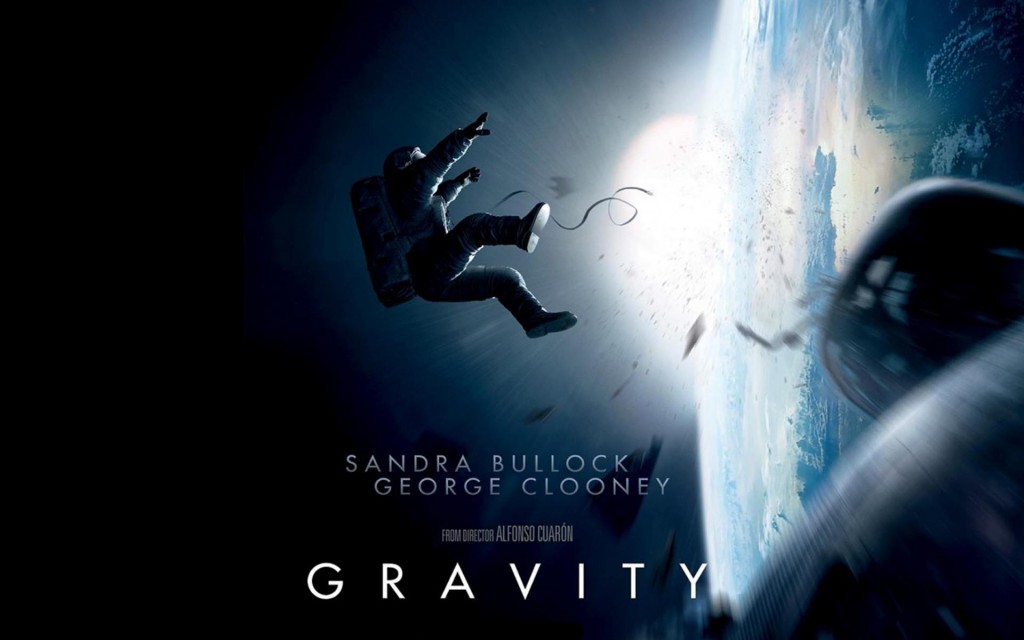Oscar Nominated film “Gravity” gets a critic’s second look

While undeniably a visually-stunning film, “Gravity” presents a flawed and superficial story, despite its ten Oscar Nominations. Photo Credit: www.junkiemonkeys.com
By Pam Giangreco, Staff Writer
Outer space, in its own vastness, is able to inspire awe while inducing a sense of helplessness. Alfonso Cuaron’s “Gravity” accentuates this contradiction by captivating the audience with visual marvels, but shatters any sense of safety in the ever going expanse.
On this backdrop we are given the story of two astronauts spinning through space, attacked by the very environment that left them vulnerable.
This film is successful in its astounding cinematography, incredible scope and its attempt to imbue a message of the human need to survive. However, it sincerely and impressively fails in its half formed narrative and its mediocre dialogue.
The film is able to visually attend to the nature of space in a way that is reminiscent of the Kubrick classic “2001: A Space Odyssey” (1968). Both films were able to use the modern resources of their time to elevate what is visually attainable in the filmic format, progressing past what was previously thought as possible.
In its use of stunning CG and one of the best uses of 3D that has yet been seen, “Gravity” is indeed intoxicating. The camera opens the film with beautiful, wide shots of the world spinning in a natural and calming familiarity, and from this opening shot al l the way through the film the cinematography is able to create a tangible sense of claustrophobia in the infinite place.
In addition, the 3D throughout is not merely a gimmick but truly enraptures the viewer within the context.
Yet with all of its incredible imagery, poorly formed character s and a rather laughable basic storyline cheapen the film’s whole experience. Dr. Ryan Stone, played by the highly lauded Sandra Bullock, is a medical engineer on her first mission with the more experienced astronaut, Matt Kowalski (George Clooney). The two are placed in danger when the Russians strike a defunct satellite, sending high-speed debris flying their way. The emotionally insecure Stone is then tethered to the calm and collected Kowalski as they try to make their way to the closest space station.
These awful, cookie-cutter characters are appalling.
Stone’s character tumbling through space has already earned our sympathies, but the film’s writers felt the need to throw in both a lost child and a neglectful father. It feels like too much, and with the background information so blatantly stated in the dialogue, it verged on humorous.
Kowalski is presented as the ever-rugged, self-sacrificing leader who not only rescues Stone initially, but even after he has died comes back in a vision to give Stone one final pep talk. Meanwhile, much of Stone’s panicked ramblings become repetitious and interrupt the notions of her isolation.
Bullock and Clooney both give solid performances in their respective roles, but there was simply not enough for them to work with.
I find this film incredibly frustrating only because the vision is there, but it is cheapened by poorly developed dialogue. The film is still worth seeing since the cinematography is so beautiful that it can stand on its own. Not to mention that the victory for human resilience at the end of the film is triumphant.
Overall, the film has some grave shortcomings; but where it succeeds, it soars.
